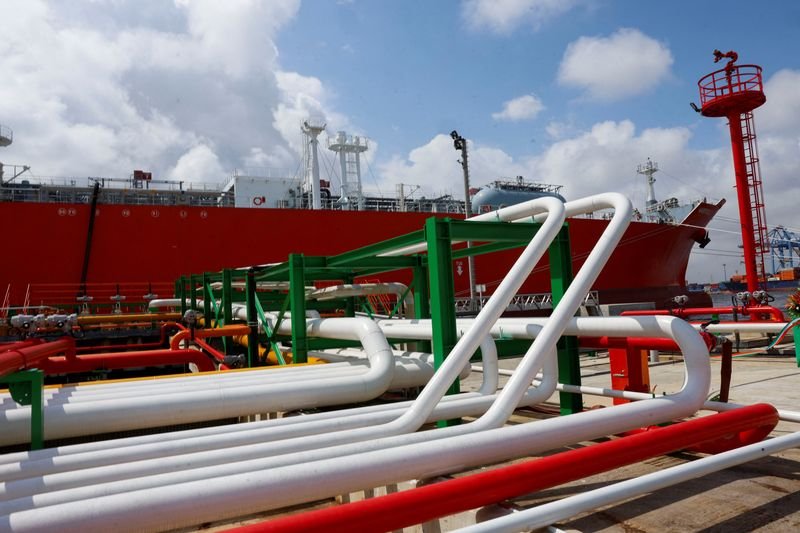Oil Prices Decline Ahead of Tariff Deadline
As the deadline for new tariffs approaches, oil prices are experiencing a noticeable downturn. This fluctuation in the oil market is attributed to a combination of global economic factors, geopolitical tensions, and supply-demand dynamics.
Current State of Oil Markets
In recent weeks, oil prices have struggled due to various influences. Traders and investors are closely monitoring several key indicators, including inventory levels, production rates, and potential changes in trade policies. The uncertainty surrounding international relations and trade agreements has also impacted oil price stability.
Factors Influencing Oil Prices
Geopolitical Tensions
Geopolitical issues play a significant role in shaping market sentiment. Unrest in oil-producing regions can lead to supply disruptions, influencing prices. Tensions between countries can create a ripple effect, impacting not only oil prices but also broader economic conditions. Stakeholders are keenly focused on how these geopolitical dynamics unfold, as they can dramatically shift market trajectories.
Economic Indicators
Economic performance indicators from major economies are crucial for predicting oil demand. For instance, shifts in economic growth rates, unemployment statistics, and consumer spending can signal changes in energy requirements. A booming economy typically drives up oil demand, while economic slowdowns can lead to a decrease, subsequently affecting prices. Investors are actively tracking these economic signals for signs of future demand growth or decline.
Production Levels
Production levels from key oil-producing countries are critical to price movements. Changes in production strategies or agreements among member nations of organizations like OPEC can lead to price volatility. Higher production can flood the market, leading to falling prices, whereas reduced supply often results in price increases. Traders keep a close eye on announcements and production reports, as these can dictate market behavior.
Impact of Global Trade Policies
Tariff Effects on Oil Prices
The looming tariff deadline has created an air of uncertainty in the oil markets. Tariffs on imported goods can lead to increased costs for consumers and businesses alike, possibly dampening demand for energy. As negotiations develop, investors are considering how these potential changes could alter the landscape of global oil trade.
Link to Broader Economic Trends
Furthermore, the implications of tariffs extend beyond the oil sector. Increased tariffs may lead to inflation, affecting the overall economic climate. Companies might react by reducing operational costs, including energy consumption, which can subsequently impact oil demand and prices. As a result, oil prices could fluctuate based on broader trade policy impacts.
Strategies for Investors
For those looking to navigate the dynamic oil market, employing strategic approaches is essential. Staying informed about geopolitical developments and economic data releases is crucial for making educated investment decisions. Utilizing tools such as market analysis reports and forecasts can offer insights into potential future trends.
Diversification of Investments
Diversifying an investment portfolio to include various energy assets can help mitigate risk. By spreading investments across different energy commodities, including renewables and fossil fuels, traders can hedge against market volatility caused by geopolitical instability or sudden economic shifts.
The Role of Supply and Demand
Understanding the fundamental principles of supply and demand is vital for anyone engaging with oil markets. In times of high supply and low demand, oil prices tend to fall. Conversely, when demand outpaces supply, prices typically rise. This critical relationship highlights the need for constant vigilance and market analysis.
Seasonal Demand Variations
Additionally, seasonal trends can significantly influence oil prices. For instance, during peak traveling months, demand for gasoline may rise, pushing prices higher. Winter can also see increased demand for heating oil. Traders who can anticipate these seasonal shifts can position themselves advantageously in the market.
Looking Ahead
Ultimately, the oil market remains highly reactive to a plethora of factors, including geopolitical situations, economic indicators, supply-demand relationships, and emerging trade policies. As the deadline for tariffs approaches, stakeholders will need to carefully monitor these developments to navigate potential price fluctuations effectively.
By understanding the interconnectedness of these elements, investors and industry players can better prepare for the challenges and opportunities within the evolving landscape of global oil markets. As these factors continue to unfold, staying ahead of the curve will be key for anyone involved in the oil industry.
